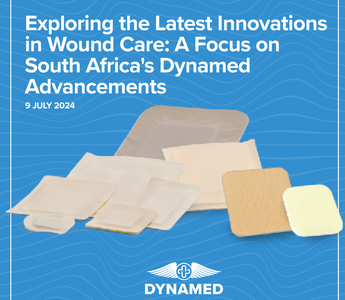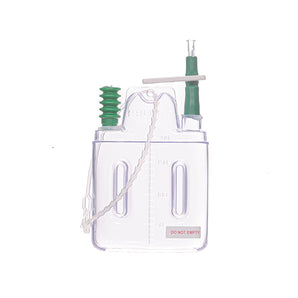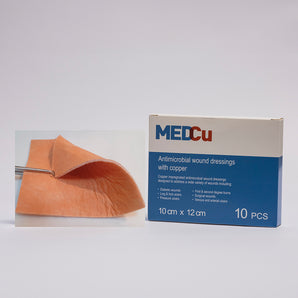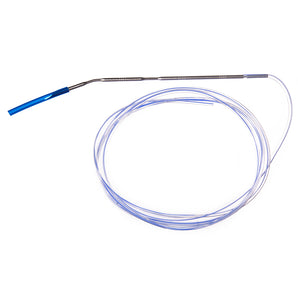In the ever-evolving field of medical science, the quest for more effective wound care has led to significant advancements. It's a topic that's not only vital for healthcare professionals but also for those keen on understanding the progress in this crucial area.
Wound care has a considerable impact on our economy, with associated medical costs reaching 15 billion and lost workdays amounting to 5 billion. As we delve into the latest innovations, we'll explore how these technological strides aim to reduce these figures.
From the development of specialised drugs to the use of advanced wound dressings, we're witnessing a revolution in the way wounds are managed. Join us as we navigate through these exciting breakthroughs, shedding light on experimental outputs and potential clinical trials.
Key Takeaways
- Advanced wound care is gaining prominence with innovations such as bioactive dressings and smart wound technologies, aiming to optimise wound healing and reduce treatment times.
- Bioactive dressings, incorporating active substances, not only enhance the healing rate but also prevent wound infections.
- Smart technologies enable real-time monitoring and timely treatment of wounds, rendering them especially beneficial for managing chronic wounds.
- New materials including natural and synthetic polymers and bioactive molecules have been developed for wound healing; bioactive substances in particular aid in inhibiting infections and accelerating healing rates.
- Advanced imaging and monitoring techniques like digital and thermal imaging, along with wearable monitors, have revolutionised wound diagnosis and management, enabling healthcare professionals to track wound progress in real-time.
- Novel advancements in combating wound infections utilise nanoparticles for their potent antimicrobial properties, while newly discovered substances like Bromelain and Bioengineered skin have shown potential in managing wound pain.
Latest advancements in Wound Care
In this century, wound care management has undergone a significant transformation, mainly attributable to technological and scientific advancements. Notably, advanced wound care, an avenue championed by leaders in the field like Dynamed, has come to the fore.
Ground-breaking innovations such as bioactive dressings and smart wound technologies, to name just a few, are reshaping the face of wound care.
Bioactive Dressings
Bioactive dressings are a novel achievement in advanced wound care. These dressings incorporate substances active in wound healing, offering a higher success rate in wound healing compared to traditional methods. They deliver either bioactive compounds or materials with endogenous activity, subsequently accelerating the wound healing rate and inhibiting infections.
A breakthrough in this domain was a study conducted by Gao and colleagues. These researchers created a bilayer PLGA-PVA dressing, integrating silver nanoparticles and seeding stem cells. The results were promising, with the silver particles augmented the mechanical potency and moisture content of dressings. Additionally, the embedded stem cells were found to secrete bioactive growth factors, instrumental in cell growth and wound healing. Thus, showcasing a valuable potential for bioactive dressings in skin tissue engineering.
Smart Wound Technologies
Another pivotal development is the advent of smart wound technologies. The challenge and financial burden of chronic wounds - exacerbated by factors such as diabetes and burns - clearly highlight the necessity for real-time monitoring and timely treatment. Enter smart wound technologies.
A smart bandage, for instance, can monitor wound biomarkers and into the bargain implement healing strategies. This represents a great leap forward from traditional wound care, which tended to result in conservative or extraneous therapeutic options. Smart wound technologies are catalysing the transition towards a closed-loop wound management style, optimising the efficacy of wound care and dramatically reducing treatment times.
Through these breakthroughs, advanced wound care, backed by Dynamed, is shifting the paradigm from simple dressing to innovative solutions in wound management.
Innovations in Wound Healing Materials
Building on from the enlightening introduction to advanced wound care, we move forward to discuss some ground-breaking materials used in wound healing. These materials, derived from natural and synthetic polymers and imbued with bioactive molecules, have contributed significantly to the advancement in wound care.
Natural and Synthetic Polymers
Polymers, subdivided into natural and synthetic categories, play a critical role in the innovation of wound healing materials. Many polymers can be manipulated to emulate the skin in the form of scaffolds, creating optimal conditions and structures for different wound types. Natural polymeric scaffolds enhance cell adherence and growth, while synthetic polymers lend robust mechanical structures to the scaffolds. For example, collagen scaffolds, derived from natural polymers, promote cell proliferation and enable cells to breach the ECM, thereby serving as ideal substitutes for natural skin.
Speaking of synthetic polymers, they've been successful in retaining moisture content and augmenting the mechanical strength of wound dressings. A stellar example is a study conducted using a bilayer PLGA-PVA dressing. This dressing, integrated with silver nanoparticles in the PLGA electrospun film, manifested potential for skin tissue engineering, accelerating cell growth and wound healing.
Bioactive Molecules and Growth Factors
Bioactive molecules and growth factors represent another critical facet of wound healing materials development. These molecules are often incorporated into the structure of wound dressings, leading to enhanced wound healing rates and inhibition of wound infections.
An array of potential bioactive molecules exists – chemical drugs, silver, growth factors, stem cells, and plant compounds, all worth thorough study. For instance, sutures laced with mesenchymal stem cells enhanced collagen deposition and boosted tissue regeneration. Likewise, gen-modified microalgae, when seeded into commercially available sutures, have demonstrated controlled release of growth factors at the wound site, enhancing their wound healing results. Such novel uses of bioactive molecules show promising avenues toward optimal wound healing.
In the quest for advanced wound care, embracing and deploying such innovations will prove to be a monumental leap. All set to pave the way for the exciting developments, we at Dynamed remain at the forefront, committed to improving and transforming wound care strategies.
Advanced Imaging and Monitoring Techniques
Ground-breaking technologies have transformed wound monitoring and diagnosis, providing healthcare professionals with unprecedented detail and insights into wound healing and management. The advent of advanced imaging and monitoring devices allows clinicians to assess wound healing progress in real time, improving effectiveness in wound care management.
Digital and Thermal Imaging
Digital and thermal imaging have accelerated advancements in wound care. Thermal imaging, for instance, is instrumental in detecting deep tissue injuries, thereby aiding in early-stage diagnosis. Researchers Langemo et al., (2019) demonstrated that its timely application reduced both clinical and financial burdens associated with hospital-acquired pressure injuries.
In addition to thermal imaging, digital wound photography plays an essential role. By capturing clear, detailed images of the wound, it ensures that wound care management is both efficient and effective. It's precisely this type of meticulous documentation that Dynamed excels at in their advanced wound care approach.
Wearable Wound Monitors
Real-time monitoring of wound status has been made possible by wearable wound monitors. These devices incorporate sensors that detect changes in wound environment and relay this data to clinicians, aiding in timely diagnosis and intervention. Their utility extends beyond mere monitoring - sensors identify chemical or biological markers and convert them into actionable data. For example, advancements have led to rapid growth in temperature and pH detection technologies, significantly improving wound diagnosis and treatment.
Advanced wound monitoring technology aligns perfectly with Dynamed's approach towards advanced wound care. Merging technology and wound care brings us closer to improved patient outcomes and paves the way forward in wound care management.
Methods for Improved Pain and Infection Management
Building upon the realm of advanced wound care, our focal point will now shift towards the recent advancements employed in pain and infection management. Known areas of concern in wound care, the effective management of pain and avoidance of infection are crucial for optimal healing.
New Approaches to Wound Infection
In preventing infection, recent research steers towards the use of nanoparticles, particularly metal or metal oxide based. These specifically designed dressings pose excellent antimicrobial properties, making them instrumental in infection management[^1^]. For example, Fenugreek incorporated silk fibroin nanofibers released approximately 215.09% within 24 hours, contributing to effective infection control and promoting faster healing.
PCL/PCE hybrid nanofibrous matrix, another highlight in modern wound care, marked its presence with high antibacterial properties and a tensile elastomeric modulus akin to human skin tissue. Their significance in combating infections, alongside ensuring skin tissue compatibility, marks a milestone in our understanding of infection management.
Innovations in Managing Wound Pain
Addressing wound pain is equally vital in advanced wound care. Take Bromelain, for instance, a group of pineapple-derived proteolytic complex enzymes. Its potential therapeutic and clinical implications are witnessing an exploration for its pain-relieving properties. Recent studies have delved into the use of enzyme fractions derived from pineapple stem, with experiments on full-thickness skin burns of rats showing promising results.
Moreover, Bioengineered skin, a novel innovation with roots in human plasma, is gaining attention for its pain management capabilities. Clinical studies confirm its potential use in burns, yielding satisfactory functional outcomes. Such advancements stand as testaments to our progression in managing wound pain.
Leaning further into the future of wound care, we will continue to expand our knowledge and employ the latest research to refine our approach towards pain and infection management.
Conclusion
We've seen tremendous advancements in wound care, driven by innovative technology and materials. The emergence of bioactive dressings and smart wound technologies has been a game-changer, improving healing rates and preventing infections. Ground-breaking materials like collagen scaffolds and PLGA-PVA dressings with silver nanoparticles are opening new avenues in skin tissue engineering and wound healing. The integration of bioactive molecules into dressings has shown great potential, promising improved outcomes.
Not to overlook the revolution in wound monitoring and diagnosis, brought about by advanced imaging and wearable tech. These tools provide real-time data, enabling clinicians to make informed decisions. Moreover, we've seen significant strides in pain and infection management, with nanoparticles in dressings offering antimicrobial properties and innovations like Bromelain and bioengineered skin providing pain relief. It's clear that wound care is evolving rapidly, with a focus on enhancing patient outcomes and refining strategies.
What are the recent advancements in wound care discussed in the article?
The article outlines advancements such as bioactive dressings, smart wound technologies and innovative materials like collagen scaffolds and PLGA-PVA dressings with silver nanoparticles. It also discusses the incorporation of bioactive molecules into wound dressings.
What technologies are highlighted for their role in wound monitoring and diagnosis?
Digital and thermal imaging technologies and wearable wound monitors are highlighted for their role in real-time assessment and data relay regarding wound healing progress to clinicians.
What innovations in pain and infection management within wound care are discussed?
The article discusses the use of nanoparticles in dressings for antimicrobial properties and innovative techniques like Bromelain and bioengineered skin for pain relief during wound care.
How do these advancements signify progress in wound care strategies?
These advancements represent a refined approach to pain and infection management in wound care. They highlight the continuous evolution towards enhanced patient outcomes and improved wound care strategies.
How do bioactive molecules improve wound healing outcomes?
Bioactive molecules like growth factors and stem cells, when incorporated into wound dressings, have shown potential in improving wound healing outcomes by accelerating the healing process.







